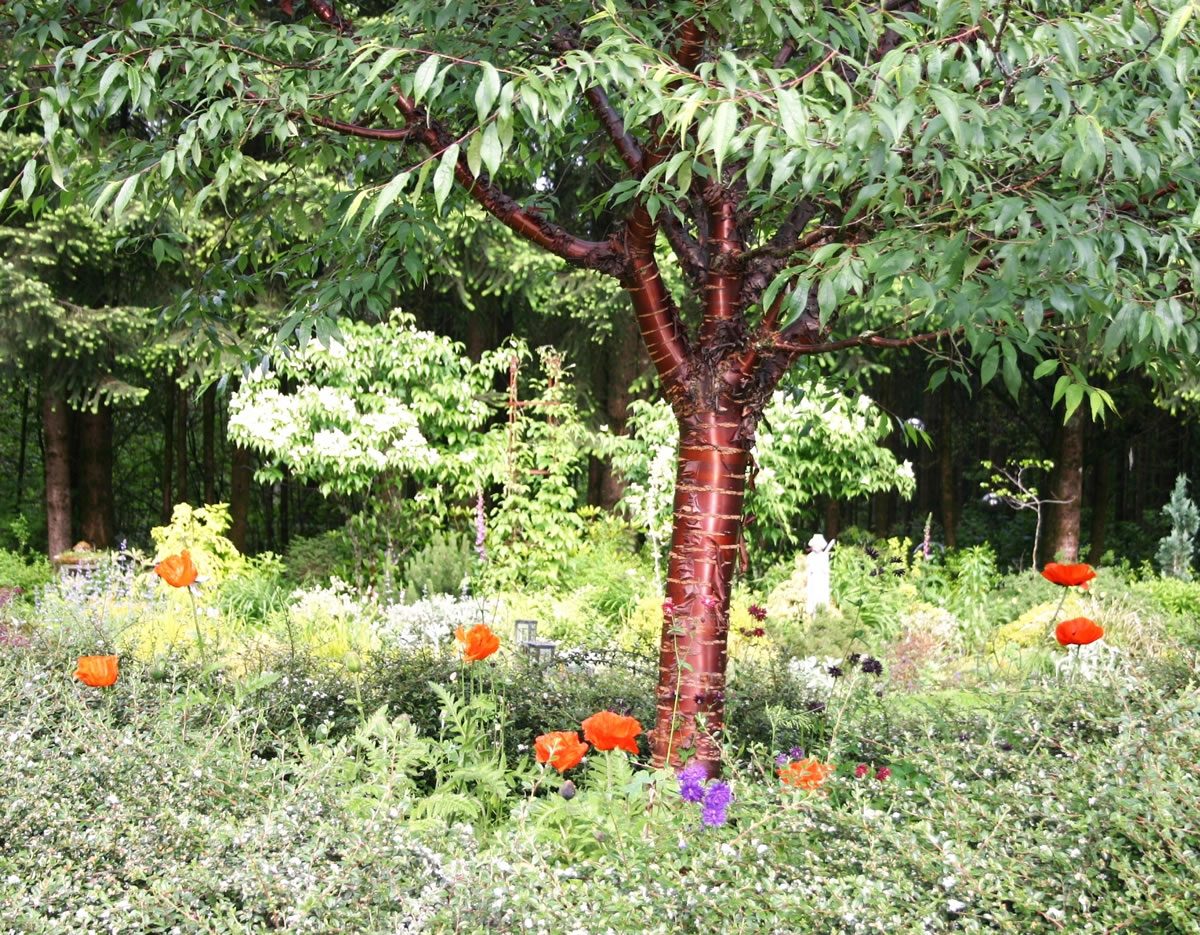Many gardens are at their peak of flower bloom in the month of June. This is the time of year when every nursery and garden center across the land draws us in with sheer flower power. With a bit of effort and some good advice from fellow gardeners, even the beginning gardener can have a blooming perennial border in one weekend. For those of us with a compulsion to collect plants, summer is the heyday of our gardening year.
Anyone who dallies in the field of creative arts will tell you right up front to give the process of flower gardening free rein. Trying to control the nature of a garden is a full-time job, often fraught with frustration. Personally, I find myself more anxious, even dissatisfied when I strive too hard for perfection. Occasionally, I have to step back, take a deep breath and enjoy the way things are.
Just last week I begged my Oriental poppies, Papaver orientale, to hold off blooming until the second or third weekend of June. “Wait for the summer parties and the big garden events,” I pleaded. “Think of all the accolades as visitors ‘ooh’ and ‘aah’ at your vibrant colors and crepe paper delicacy.” They ignored my pleas, turned towards the sun and burst into mouth-watering color. “Patty’s Plum” and “Watermelon” are so aptly named.
The Oriental poppies are reliable, hardy perennials, easy to grow if planted in a sunny location with well-drained soil. If you have heavy soil, add compost and a handful of grit before planting. Think of them growing in their homeland of Armenia, where they emerge from rocky slopes and in dry meadows. Their large taproot ensures a tolerance of drought once established. Poppies bloom in striking scarlet, vermilion and hot pink with a steady stream of new introductions in purples, plum, salmon and white.
Few flowering plants can compete with the depth of Oriental poppy flower color. Until I saw my friend Cyndi’s poppies, my favorite was the first poppy I ever planted, Papaver orientale “Allegro” with its bright orange-scarlet flowers and bold, jet-black basal markings. Cyndi’s “Turkenlouis” has me feeling envious of its fiery scarlet-red flower petals, each one with fringed edges that bristle in the breeze.
For a moment in June the Oriental poppies appear to be the perfect perennial but, alas, if I didn’t at least comment on the other side of growing poppies I would feel as if I’d introduced my sister to Mr. Wonderful without mentioning his nickname, Mr. Hyde. You see, once the flowers are spent and the petals drop to the ground, the only thing left is a large clump of coarse, broadly lance-shaped hairy foliage. It sounds like a weed and looks like a weed to me.
Compromise
My solution was to plant the poppies at the foot of a red-barked Tibetan cherry and behind a groundcover bed of low-growing cotoneaster. The tall, sturdy stems raise the flower head high enough to show while the ground-hugging foliage remains hidden. Another solution would be to surround them with strong-foliaged, late-flowering perennials such as Rudbeckia or fall flowering grasses. Christopher Lloyd suggested that after flowering, the plants can be cut right down, including the foliage, and be interplanted with summer bedding.
For many years now, gardeners in the Northwest have focused on perennials in the garden for seasonal flower color. We grew tired of the process of planting annuals each year which also meant having to live with large, empty spaces in beds and borders until the annuals were ready to plant. It seems that many have found a comfortable compromise. At some point over the summer, as you visit nurseries and other gardens, you may run across a perfect perennial that could do the job as well as this year’s annuals have done.
Take the measurement of the area you are planting before you go plant shopping. When you find the plants you want, make sure you know how tall and wide they will eventually grow. A 5- by 10-foot bed is 50 square feet. Ask the nursery personnel how many plants you will need to fill the space or read the plant labels and do your own math. The bones of the plant world are the trees, shrubs, groundcovers and seasonal perennials that supply the bulk of garden interest. Annuals are used to fill what gaps remain. If you haven’t done so already, make sure you find space for at least one Oriental poppy.
Robb Rosser is a WSU-certified master gardener. Reach him at Write2Robb@aol.com.



